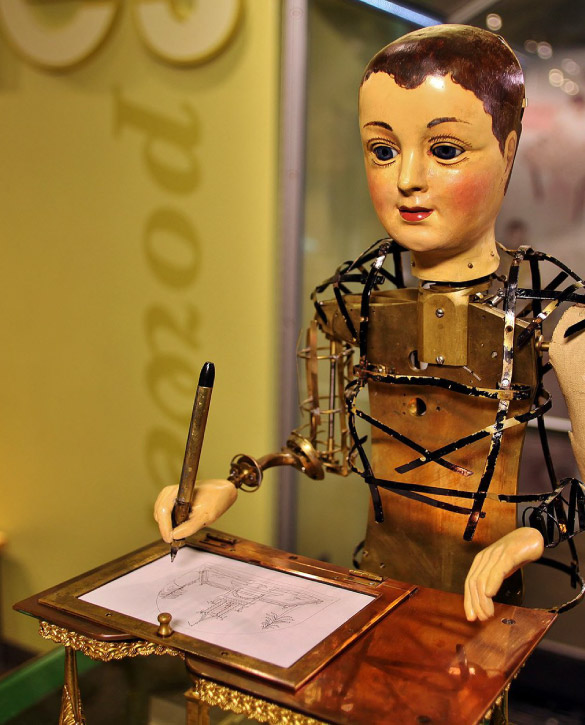Movies like the Terminator and AI popularized the idea of intelligent machines walking amongst us. In one scenario, the machines become enemies and try to exterminate humanity, leading to an apocalyptic future. In another, machines remain as docile slaves that perform all the hard labor humans don’t want to do. But, how feasible any of these two scenarios are?
The first discussions about artificial intelligence started in the 1950s and gained a place in the popular imagination in the 1970s when clever programmers started writing software capable of playing chess and answering simple questions. From there, many movies, novels, etc. were made on the subject. However, after more than half a century, intelligent machines are still not here.
The first problem one has to solve before being able to create an intelligent machine is to understand from where consciousness comes. Interesting enough, this is a question that still doesn’t have an answer from the technical fields. Every living being shows some level of consciousness, from unicellular organisms to human beings. However, even the most complex supercomputers don’t show any level of consciousness: they are still just dumb machines that are limited to perform the tasks they are programmed to execute.
To understand this, it’s useful to know about the automatons, machines created since antiquity to follow a predetermined set of operations, moving or even executing complex tasks, like drawing. One example is the Maillardet’s automaton, produced in the 1800s by Henri Maillardet. By using a complex system of gears and pulleys, he was able to create a machine capable of making elaborate drawings and even writing short poems! One that could not understand how the machine works could be fooled into thinking that it is some kind of supernatural thing, but a well-informed observer understands that it is just a dumb machine. The intelligence is not in the machine, but in the person who developed it.

A modern computer or robot is not different from such machiners in essence. They are just more elaborate and can thus execute more complex tricks. Still, they execute a predetermined set of instructions, and can thus execute different operations. There are computers that can play chess, that can talk, answer questions, drive, or even build parts of other machines. However, in every case it’s is just a dumb machine, mechanically or electronically following a set of instructions created by a human being. Just as in the automatons from previous centuries, the intelligence is not in the machine, but in its creator.
Some believe that it has to do with complexity: as a system becomes more and more complex, eventually consciousness manifests. However, this is a theory that has been disproved by every new generation of computer systems. Now there are supercomputers with extraordinary complexity and processing power, made from thousands of interconnected servers, each one dozen times more powerful than a domestic computer. Still, up to this date, none of them showed any level of consciousness.
According to the Vedas, consciousness and consequently intelligence comes not from matter, but from the soul. Every living entity, from simple organisms to human beings manifests a certain level of consciousness and intelligence, which becomes more prominent as a soul advances towards higher species, finally maturing when one reaches a human body. Actually, intelligence is not even in the gross body, but in the subtle body. Intelligence is thus not a result of the interaction of neurons, but a manifestation of the subtle body, which accompanies the soul from one body to the next. The brain is thus more like an interface, which connects this subtle intelligence to the gross body.

A machine doesn’t have a soul, therefore it can’t show any level of consciousness. If one can create a sufficiently complex machine, capable of executing different tasks or imitating certain aspects of human behavior, he may be able to fool uninformed people, but in any case, the machine will be just following the set of instructions he created.
It’s not impossible to create a machine that can imitate human behavior to an extent that may seem believable for some or to create machines that can kill, as long as one can find someone sufficiently intelligent to do so, but such machines will never be conscient or truly intelligent. They will never have a soul, therefore they will never be alive. Not only that, but they will always blindly follow all the mistakes present in the set of instructions created by the programmer, requiring constant human attention to continue to operate.
When we understand these points, it becomes easy to appreciate the work of the Creator. Not only he created plants and animals, each one with sufficient intelligence to perform the tasks necessary for their survival, but also human beings, who can think and question their own existence. Not only are they complex machines capable of moving, interacting, maintaining themselves learning, and even replicating, but each one possesses an eternal soul, capable of loving. If the creations are so complex and intelligent, what to say about their creator?
If anything, the evolution of computers teaches us a few things about the complexity of Krsna’s creation. Modern computer vision programs require about 1,000,000 MIPS of processing power, which is still more than most modern processors can offer. And this is just for the vision, so a computer can detect movement and recognize objects, which is just a small part of the set of functions a human being performs in his daily routine.
